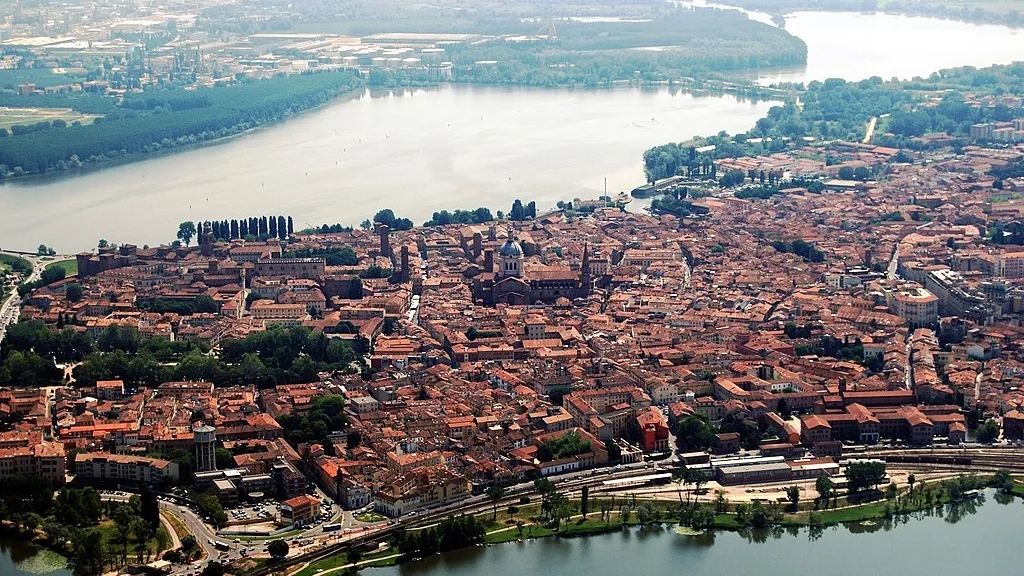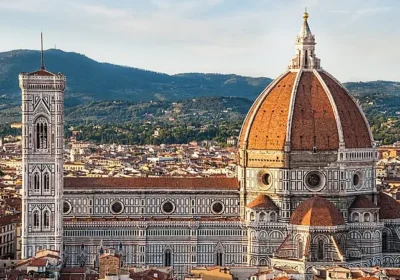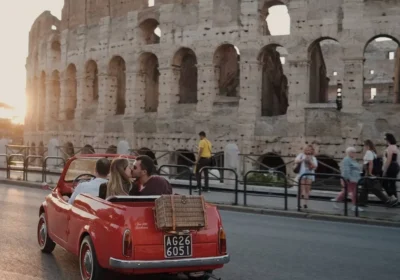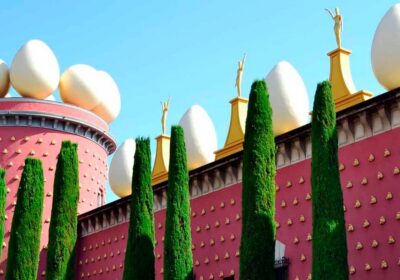Walking tour through the historic center of the city.
Start from the embankment of Lake Mantua in front of the Castle of St. George, surrounded by an ancient moat. This is the main part of the Ducal Palace, with its famous Conjugal Bedroom (Camera degli sposi), painted by A. Mantegna, and is rightly considered a masterpiece of Italian painting. The castle was built by the architect Bartolino da Novara at the end of the XIV century. From here you will have a view of the Mantua Lakes, the result of engineering advances in hydraulics that led to the diversion of the flow of the Mincio River some 900 years ago. Continue the tour and stop in front of the House of the hunchback minstrel at the court of Gonzaga – Rigoletto. The way lies through some of the inner courtyards of Palazzo Ducale (Castle Meadow, St. Barbara’s Square, Pallone Square). Then come out to the majestic Piazza Sordello, with the facade of the oldest part of Palazzo Ducale (1200). Pass the Cathedral, a multi-faceted church that embodies numerous architectural styles, the Episcopal Palace, the Bonacolsi Palace, and St. Peter’s Arch. After passing the arch, stop to look at the Tore dela gabbia (Tower of the Cage), equipped with an outdoor cage, an edifying example of prison confinement, built in the late 16th century on the orders of William Gonzaga, then ruler of the city. From here you can walk to the beautiful Bibiena Theater, one of the finest examples of Italian Baroque (theater visit optional and extra charge).
Continue your tour in Piazza Broletto. After admiring the Palace of the Mayor (Palacco del Podesta) and the bas-relief of Virgil behind the pulpit, pass under the impressive portico and enter Piazza Erbe (herb), where fruits and vegetables have been traded for centuries. On the square are the Palace of Justice (XIII century) with a tower with an ancient astrological clock from the XV century. Nearby is the oldest Romanesque church (visit), probably commissioned by Matilda di Canossa, striking for its austerity and unusual round shape (Rotunda of St. Lorenzo). Admire the beautiful Merchants’ House near the church, built in exquisite Venetian style, an example of the Renaissance. The tour ends with a visit to the imposing and enchanting Church of St. Andrew, which took almost 300 years to build. The church was designed by L. B. Alberti and commissioned by Ludovico Gonzaga. The church stands on the very spot where almost two thousand years ago Centurion Longinus brought a vessel with earth soaked in the blood of Christ, taken by him under the crucifixion. This most valuable relic is still kept here to this day. The church also has the funeral chapel of A. Mantegna, decorated with frescoes by his talented pupil Correggio.

















